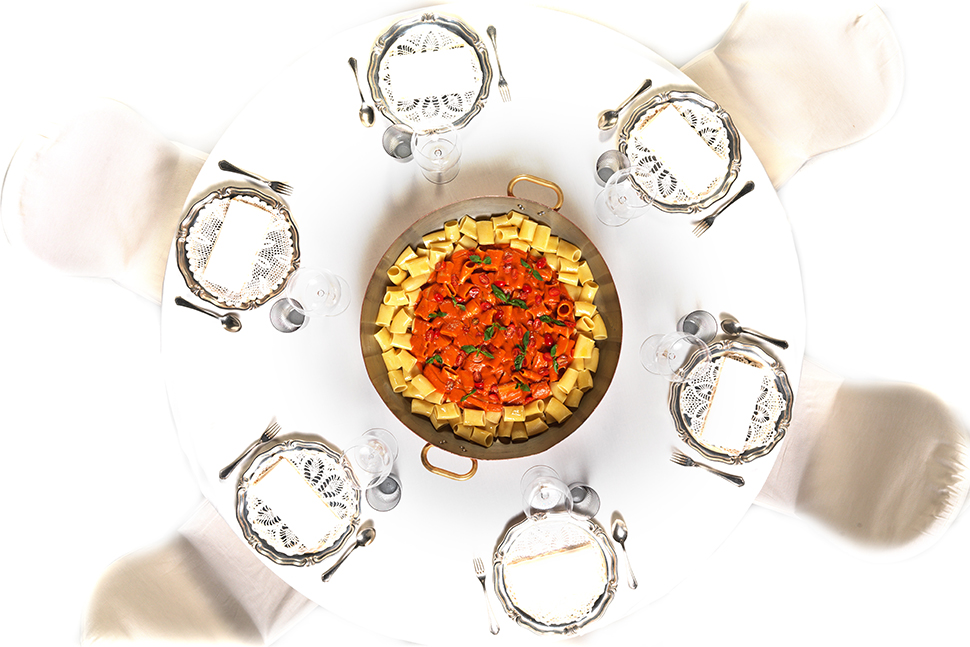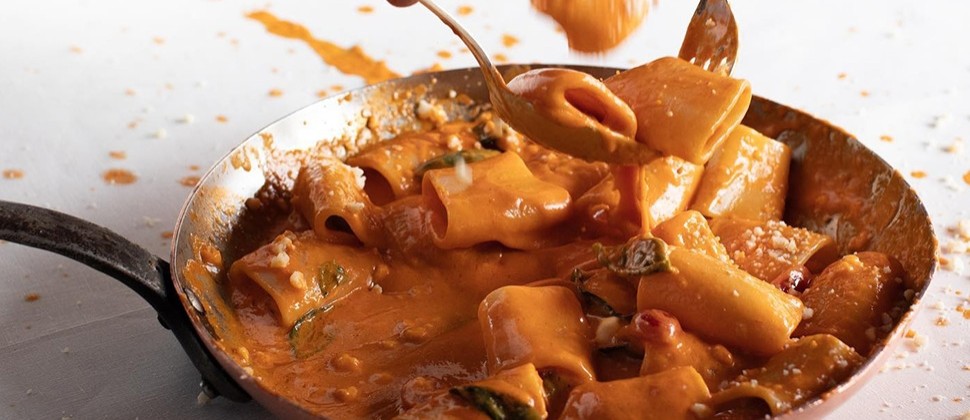History of Italian cuisine: how to prepare the legendary Paccheri alla "Vittorio" by Enrico and Roberto Cerea
About the dish
It is one of the restaurant's icon dishes. The idea came to Vittorio during a trip with his wife to Orlando. They were at Disneyland and, in one of the Italian restaurants inside the park, the chef Alfredo served tagliatelle in bianco mantecate at the table. Cerea returned to Bergamo and repurposed the same recipe with mezze maniche (now paccheri) in red. Three different kinds of tomatoes are used for the sauce: San Marzano, datterini di Pachino and Cuore di Bue. It is one of the interactive recipes, which is still completed at the table creating that dialogue with the guest that has become a hallmark of "Da Vittorio" restaurant.
Ingredients for 4 people
240 g of paccheri
To make the sauce
1 clove of garlic
200 g San Marzano tomatoes
80 g Cuore di Bue tomatoes
50 g datterini tomatoes
20 g butter
70 g Parmigiano Reggiano
10 basil leaves
Red pepper (optional)
Extra virgin olive oil
Salt, pepper
Procedure
Prepare the sauce by sautéing garlic with 1⁄2 glass of oil in a frying pan, then add previously chopped San Marzano tomatoes and Cuore di Bue tomatoes. Add salt and pepper to taste, then cook for about 35 to 40 minutes.
Blend the tomato sauce when cooked and chinois it in a saucepan. Add the datterini tomatoes; meanwhile, cook the paccheri in plenty of salted water, drain when al dente and transfer to the casserole. Gently cream with the butter and Parmigiano Reggiano, add the basil and a little oil, and chili pepper to taste. Serve immediately.












